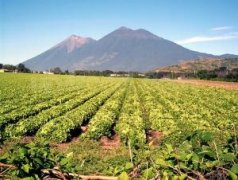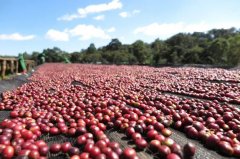Unknown Coffee Origin Ecuador explores the traditional Ecuadorian Coffee Variety Iron pickup

For professional baristas, please follow the coffee workshop (Wechat official account cafe_style)
This batch is from a cooperative organization of high-quality coffee raw bean producers in southern Ecuador, which is part of a larger alliance of coffee producers in a region bordering Peru. The association has excellent coordination and leadership, which helps them to position themselves as the top producers of Ecuadorian coffee, and the raw coffee beans from this cooperative have won many seats in the Taza Dorada competition.
The competition has been held for many years. Coffee farmers submit their high-quality coffee raw beans for national and international evaluation to determine which are the best micro-batches. It can be said to be Ecuador's COE. Unlike the COE system, there is no auction system, and the winning batches of raw coffee beans will almost be booked by buyers who know the goods.
Small farmers in this region still maintain the fine tradition of growing traditional varieties such as Typica, Caturra and Bourbon, which has been the key to their success.
The climate is very special in this area, humid almost all the year round, and the temperature fluctuates very comfortably, from 12 to 28 degrees Celsius, with an average of about 20 degrees Celsius, which is very suitable for coffee growth and reflects the flavor in the cup.
Most of the typical coffee and raw bean estates in southern Ecuador are organically grown, and the crops are very diverse. Corn, cabbage, bananas, bees, cattle, fish, fruit and coffee are grown together. Coffee leaf embroidery disease has been a threat to coffee bean producers in the region, and leaf rust has reduced Colombia's coffee production by 50% for a year or two. The simplest solution against leaf rust is intensive chemical applications, but coffee farmers in the region take a more determined organic approach because of their respect for the environment.
Aklin Peasants' Association of Lomba, Ecuador
Country Ecuador
Producing area rumba
1300-1900 meters above sea level
Cultivated varieties Typica, Caturra and bourbon
Small farmers, members of producers' cooperatives
Annual rainfall is about
The temperature is 12-28 degrees Celsius.
The area is about 1.5 hectares per member of small farmers.
Treatment washing
Flavor: front citrus sour, berry aroma, middle peach aroma, tail green tea, cigarette with floral aroma, solid and rich taste
Important Notice :
前街咖啡 FrontStreet Coffee has moved to new addredd:
FrontStreet Coffee Address: 315,Donghua East Road,GuangZhou
Tel:020 38364473
- Prev

Detailed data of hand washing temperature, grindability and powder-to-water ratio of Jensen in Panama
Professional barista communication please follow the coffee workshop (Wechat official account cafe_style) Annual rainfall: 3000 mm grading Standard: SHB Coffee Variety: Geisha average Annual temperature: about 20 degrees C treatment: washing raw beans specifications: 17-18 mesh planting altitude: about 1750m soil types: volcanic soil harvesting method: manual harvesting Panamanian Jensen Manor geisha washing 2004
- Next

Panama Emerald Estate Blue Standard Rose Summer Hand Brewing Temperature, Grinding Degree, Powder Water Ratio Record Brewing Skills
Professional barista exchanges Please pay attention to coffee workshop (Weixin Official Accounts cafe_style ) Geisha pronunciation is the same as Japanese geisha, so there are also individually called geisha coffee; because the tree species is taller than ordinary coffee trees, originally planted in a small area of the manor, it was used as a windbreak forest. And the son of the owner of the estate, in order to participate in the annual Panama Best Coffee Competition,
Related
- Detailed explanation of Jadeite planting Land in Panamanian Jadeite Manor introduction to the grading system of Jadeite competitive bidding, Red bid, Green bid and Rose Summer
- Story of Coffee planting in Brenka region of Costa Rica Stonehenge Manor anaerobic heavy honey treatment of flavor mouth
- What's on the barrel of Blue Mountain Coffee beans?
- Can American coffee also pull flowers? How to use hot American style to pull out a good-looking pattern?
- Can you make a cold extract with coffee beans? What is the right proportion for cold-extracted coffee formula?
- Indonesian PWN Gold Mandrine Coffee Origin Features Flavor How to Chong? Mandolin coffee is American.
- A brief introduction to the flavor characteristics of Brazilian yellow bourbon coffee beans
- What is the effect of different water quality on the flavor of cold-extracted coffee? What kind of water is best for brewing coffee?
- Why do you think of Rose Summer whenever you mention Panamanian coffee?
- Introduction to the characteristics of authentic blue mountain coffee bean producing areas? What is the CIB Coffee Authority in Jamaica?

